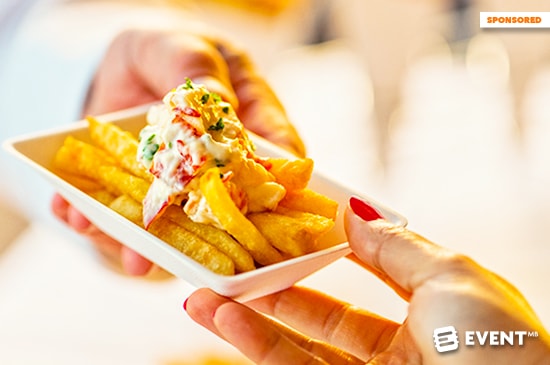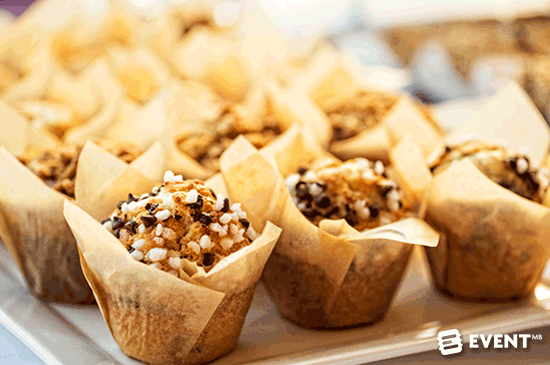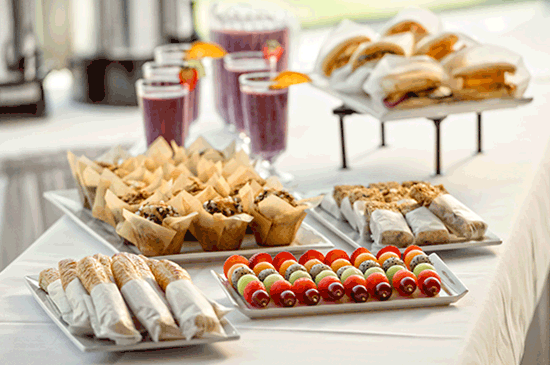Skift Take
Food and networking are important elements of most events. Here are some top tips for creating menus that encourage better networking and connections at your events.
This is a sponsored post written by Greg Smith, food and beverage expert at Halifax Convention Centre. More information about Event Manager Blog’s sponsored posts.
It can be hard to find a moment to connect with friends or family over a meal, even though research tells us that bonds are forged when people eat together. In the conference and convention world, planners know how important food is to a well-orchestrated event. Meaningful connections are formed and new friendships born over meals or during breaks.
How you design your food and beverage service can have immense impact on how those networking opportunities unfold.
Food is the New Weather
It’s key to remember that food is often the centrepiece of conversations, even more than something innocuous like the weather, especially during the first hours of an event. People don’t always know each other very well, and food is an easy, approachable topic of conversation to dive into when you’re just getting to know someone.
Using food as a talking point can be made even easier for delegates when a planner uses the first networking moments of an event as a unique food experience. So spend some time thinking about the little ways in which you can make the first meal a moment for event participants.
It doesn’t have to be extravagant either. During breakfast for example, the fruit choices could be displayed in an interesting way. Or the granola can reflect local cuisine and tastes. Work with your venue to make it easy, but also make it memorable. Even what the room smells like can make a difference. When you walk into a room and smell something delicious, it’s something to talk about.
Invest in Something Sweet
You may think that an elaborate dinner, plated with care and precision, might be the most memorable moment for a delegate, but that isn’t always the case. What often sticks with people is the dessert. Why? Sometimes, it’s simply because dessert is the last thing a delegate will experience during a meal. But dessert is also the course a delegate can really focus on because they’ve already connected with the people around them, and likely feel at their most comfortable with their tablemates. So they can focus on what they’re eating, along with the conversation itself.
When working with planners to design a complete event menu, take the time with your venue to talk about how best to cap a meal with something sweet. Dessert can often be a good moment to invest a little extra because it’s memorable. Consider creating a menu with some lighter first courses, but a more decadent dessert to give delegates a moment to remember.
To Sit Or To Stand
One simple way to facilitate networking is to host events with standing receptions and grab-and-go options, rather than traditional plated meals. More and more planners are picking menus that focus on giving delegates options and flexibility. It’s easy to understand why, since there are so many benefits of an event with this format. First and foremost, delegates aren’t limited to just their table as networking opportunities, since it can be tough to circulate during plated service. Plus, with grab-and-go menus, delegates have more choice in what they want to eat, and can be strategic about who they sit or connect with during meal time.
One additional benefit for planners is that standing or grab-and-go menus can accommodate more dietary choices, making your life much simpler. And for your delegates, they may not wish to broadcast their food choices, so this menu format helps them be more comfortable. And helping people feel at ease means they can focus on meeting one another, rather than worrying about if the event can accommodate their lifestyle choices or dietary needs.
Of course, seated, plated meals still have great value. Sitting together for an extended time over a meal can build a real bond between people. There’s a place for both formats – sitting and standing – during an event, and using them both strategically can provide a comprehensive experience for delegates. First, provide guests with the opportunity to informally get to know one another, and then let them spend more time together for a seated service. These two types of event culinary experiences complement each other to help create memorable connections.
In Conclusion
Using traditional and non-traditional meal formats, focusing on a meal highlight, like dessert, and treating every meal as a moment are ways to help your delegates meet one another and build relationships.
Event planners should work with their venues as closely as possible when designing a menu and ensure that effective networking for event attendees is always kept in mind. Creating the best event possible means thinking about every meal or dining moment as a cohesive whole. Every meal can contribute to a unique and unforgettable event experience.








